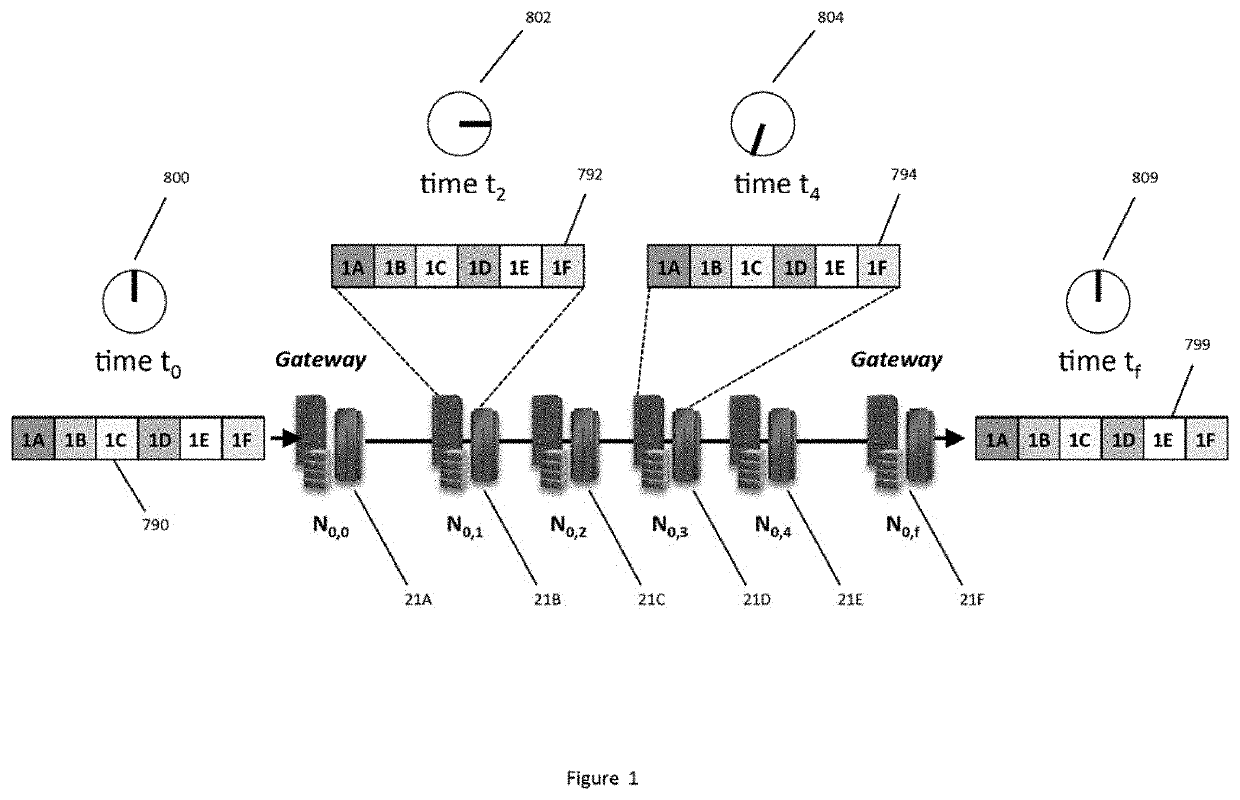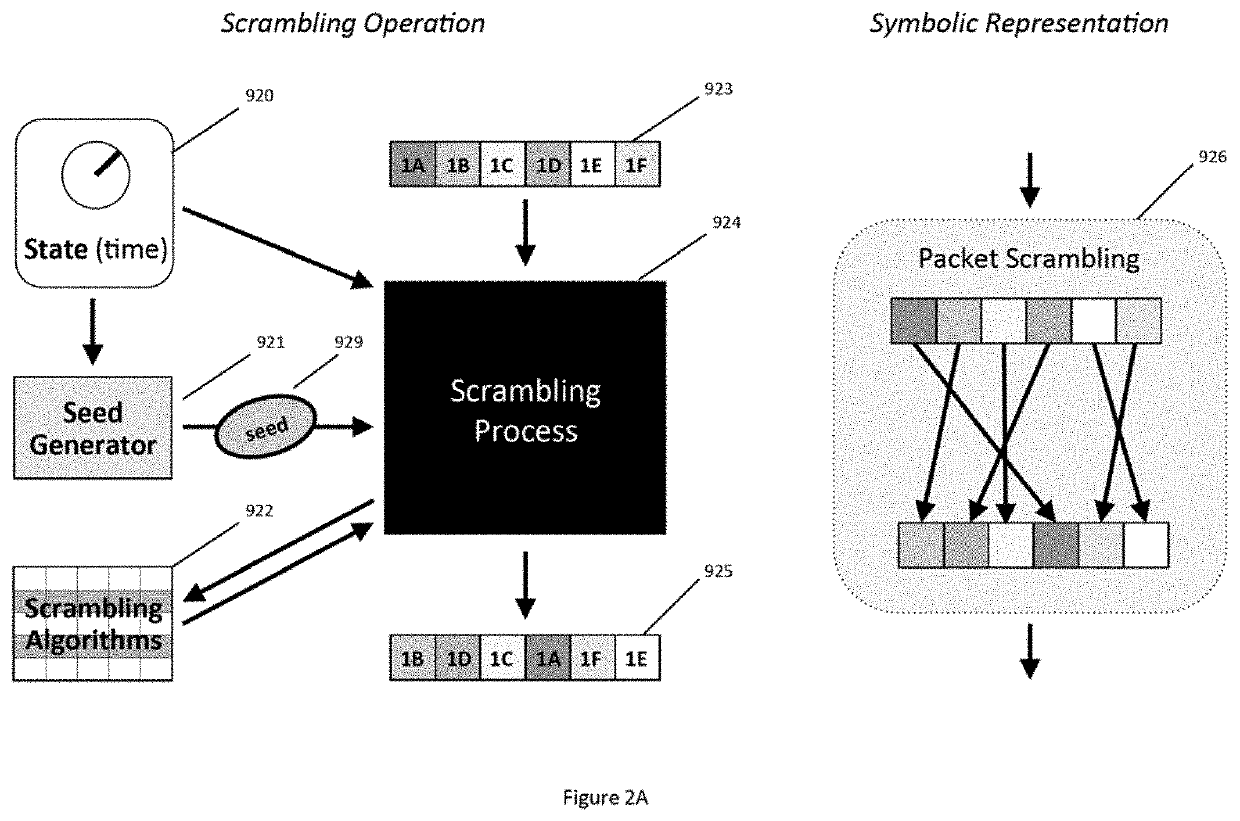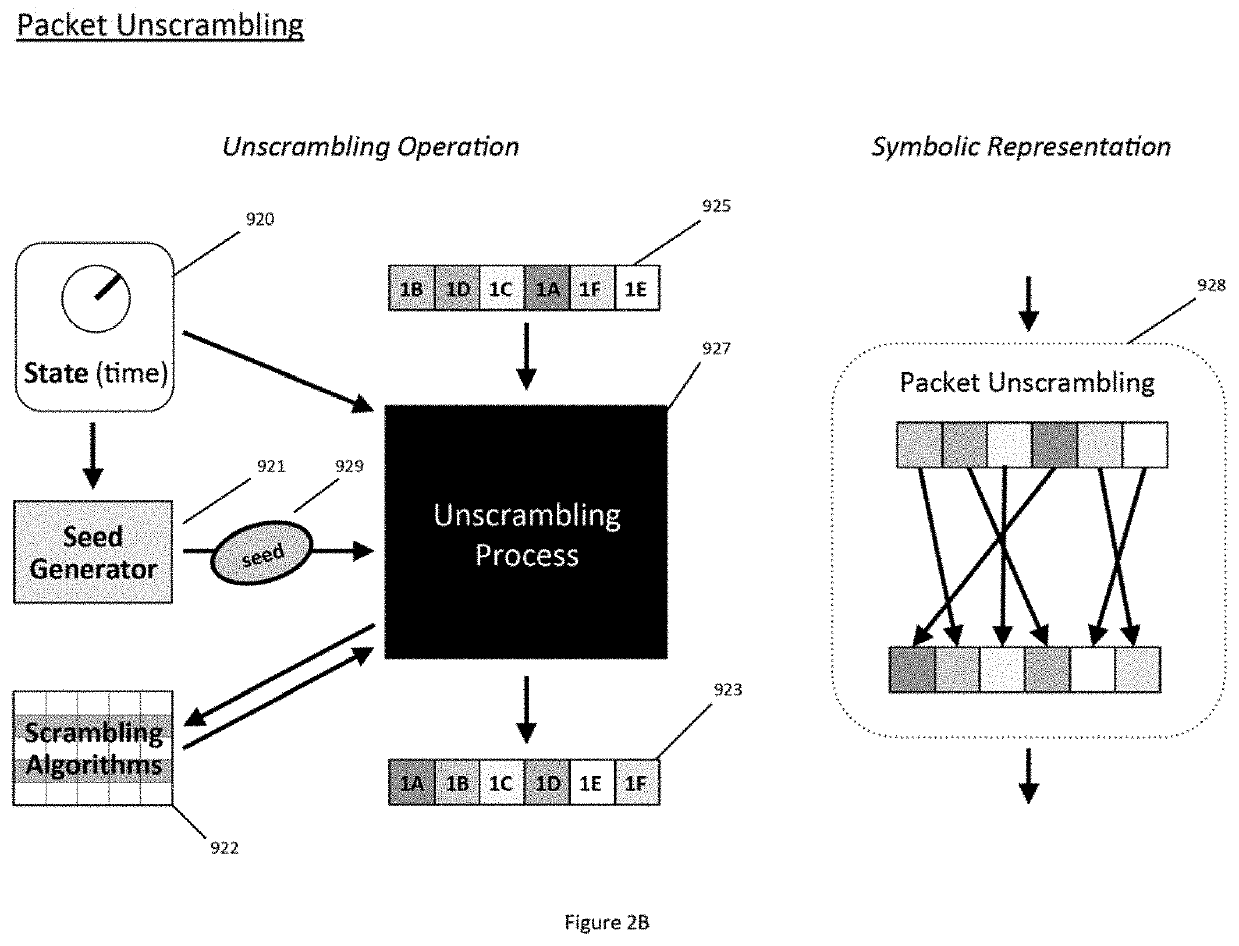While such progress is tremendously beneficial to everyone, there are also negative consequences of our heavy reliance on technology.
It is not surprising that when the communication
system fails to perform, e.g. during an earthquake or
severe weather, people become disoriented or even panicked by their being “unplugged”, even if only temporarily.
Line, the free call and messaging app, has been rocked by a recent spate of
data security breaches.
Theoretically, the laws of
physics set the maximum
data rate of such networks at the
speed of light, but in most cases practical limitations in
data encoding, routing and traffic control,
signal-to-
noise quality, and overcoming electrical, magnetic and
optical noise and unwanted parasitics disturb or inhibit information flow, limiting the communication network's capability to a fraction of its ideal performance.
But even today care is required in operating full-duplex telephonic communication to prevent feedback, a condition where a
receiver's sound is picked up by its
microphone and fed back to the caller resulting in confusing echoes and sometimes uncomfortable whistling sounds—problems especially plaguing long distance telephonic communication.
Early telegraphic and telephonic systems suffered from another issue, one of privacy.
It is this very diversity that defines an intrinsic
weakness of today's circuit switched networks—
interoperability among sub-networks.
Because the various sub-networks do not communicate with any common control protocol or language, and since each technology handles the transport of data and voice differently, the various systems are essentially incompatible except for their limited capability of placing a phone call through the PSTN backbone or
trunk lines.
For example, during the September 11 terrorist
attack on the World Trade Center in New York City, many emergency responders from all over the USA flocked to Manhattan in an attempt to help fight the disaster, only to learn their radio communication
system and walkie-talkies were incompatible with volunteers from other states and cities, making it impossible to manage a centralized
command and control of the relief effort.
With no
standardization in their radio's communication protocol, their radios simply couldn't connect to one another.
While all networks are vulnerable, the antiquity and poor security provisions of PSTNs render them especially easy to hack.
As such, a PSTN connected to even a secure modern network represents a weak point in the overall
system, creating
vulnerability for security violations and cybercrimes.
Nonetheless, it will still take many years, if not decades, to retire the global PSTN network and completely replace it with IP-based packet-switched communication.
Such packet-based networks (described here below), while more modern than PSTNs, are still unsecure and subject to security breaks, hacks, denial of service attacks, and privacy invasions.
At that time, the US Department of Defense (DoD) expressed concerns that a spaced-based nuclear
missile attack could wipe out the entire communication infrastructure of the United States, disabling its ability to respond to a USSR preemptive strike, and that the
vulnerability to such an
attack could actually provoke one.
While the concept theoretically enabled anyone with
Internet access to communicate by voice over
the Internet for free, propagation delays across the network, i.e. latency, rendered voice quality poor and often unintelligible.
While
delay times have improved with the adoption of high-speed
Ethernet links, high-speed WiFi
connectivity, and 4G data to improve connection quality in the “last-
mile”,
the Internet itself was created to insure accurate delivery of data packets, but not to guarantee the time required to deliver the packets, i.e.
the Internet was not created to operate as a real-time network.
So the dream of using the Internet to replace expensive long distance telecommunication carriers or “telco's” has remained largely unfulfilled despite the availability of “over-the-top” (OTT) providers such as Skype, Line, KakaoTalk,
Viper, and others.
OTT
telephony suffers from
poor quality of service (QoS) resulting from uncontrolled network latency, poor
sound quality, dropped calls, echo,
reverberation, feedback, choppy sound, and oftentimes the inability to even initiate a call.
The poor performance of OTT communication is intrinsically not a
weakness of the VoIP based protocol but of the network itself, one where OTT carriers have no control over the path which data takes or the delays the communication encounters.
In essence, OTT carriers cannot insure performance or QoS because OTT communication operates as an Internet hitchhiker.
WiFi security, based on a simple static login key, is primarily used to prevent unauthorized access of the connection, but is not intended to indefinitely secure data from sniffing or hacking.
In remote areas where
fiber or cable is not available,
digital subscriber line (DSL) connections are still used but with dramatically compromised data rates and connection reliability.
Since the number of routers a packet traverses and the available
data rate of each of the connections between routers varies by infrastructure and by network traffic and loading, there is no way to determine a priori which path is fastest or best.
Unlike in circuit-switched telephonic communication that establishes and maintains a direct connection between clients, with packet-switched data, there is no universal intelligence looking down at the Internet to decide which path is the best, optimum, or fastest path to
route the packet nor is there any guarantee that two successive packets will even take the same
route.
When a packet enters a
router, there is no way to know whether the routing choices made by the specific POP were made in the best interest of the sender or of the network
server operator.
This example highlights the problematic issue of using the Internet for real-time communication such as
live video streaming or VoIP, namely that the Internet is not designed to guarantee the time of delivery or to
control network delays in performing the delivery.
The Internet's lack of routing control is problematic for real-time applications and is especially an issue of poor QoS for OTT carriers—carriers trying to provide
Internet based telephony by catching a free ride on top of the Internet's infrastructure.
Since the OTT carrier doesn't control the routing, they can't control the
delay or network latency.
Another issue with packet-switched communication, is that it is easy to hijack data without being detected.
UDP is considered connectionless because it does not confirm delivery of the
payload, relying instead on the application to check for errors or lost data.
Intermittent networks with lower
data rate packet waveforms suffer occasional intermittencies affect video functions most significantly, causing painfully slow video downloads and making
video streaming unacceptable.
Congested networks operating a lower effective data
throughput rates with regular
short duration interruptions exemplified by IP packet waveform not only severely degrade video with jerky
intermittent motion, fuzzy pictures, and improper coloring and brightness, but also begin to degrade sound or vocal communication with
distortion, echo, and even whole sentences dropped from a conversation or soundtrack.
In congested networks, however, data can still be delivered using TCP by repeated requests for rebroadcasts.
In the extreme, unstable networks exhibit low data
throughput rates with numerous data stoppages of unpredictable durations.
At some level of network degradation even emails become intermittent and IMAP fie synchronization fails.
Because of their lightweight
data format, most SMS and text messages will be delivered, albeit with some delivery
delay, even with severe
network congestion but attachments will fail to download.
In unstable networks every application will fail and can even result in freezing a computer or cellphone's normal operation waiting for an expected file to be delivered.
In such cases video freezes, sound become so choppy it becomes unintelligible, VoIP connections drop repeatedly even over a dozen times within a few minute call, and in some cases fails to connect altogether.
Likewise, emails stall or freeze with computer icons
spinning round and round interminably.
While many factors can contribute to network
instability, including power failures on key servers and super POPs, overloaded call volumes, the transmission of huge data files or UHD movies, and during significant denial of service attacks on select servers or networks, the
key factors used to track a network's QoS are its packet drop rate and packet latency.
As the intermodal network
propagation delay increases, the time needed to perform round-trip communication such as in VoIP conversation increases.
In the case of UDP transport, the round trip delay increases linearly with
propagation delay.
Since long propagation delays correlate to higher bit error rates, the number of lost UDP packets increases, but because UDP does request the resending of dropped packets, the round trip time remains linear with increased delay.
If the
bit error rate remains low and most packets do not require resending then TCP
propagation delay increases linearly with intermodal propagation delay.
If, however, the communication network becomes unstable as the propagation delay increases, then the round trip time resulting from TCP transport grows exponentially because of the protocol's need for
retransmission of dropped packets.
For propagation delays of 500 ms, easily encountered by OTT applications running on the Internet, the delays become uncomfortable to users and interfere which normal conversation.
In
voice communication, in particular such long propagation delays sound “bad” and can result in
reverberation, creating a “twangy” or metallic sounding audio, interrupting normal conversation while the other party waits to get your response to their last comment, and possibly resulting in garbled or unintelligible speech.
To be clear, the single-direction latency of a communication is different than the ping test performed by the Layer 3 ICMP utility (such as the free network test at http: / / www.speedtest.net) in part because ICMP packets are generally lightweight compared to real IP packets, because the ping test does not employ the “request to resend” feature of TCP, and because there is no guarantee over a
public network of the Internet, that the ping test's
route will match the actual packet route.
In essence, when the ping experiences a long delay, something is wrong with the network or some link between the device and the network, e.g. in the WiFi
router, or the
last mile, but a good ping result by itself cannot guarantee low propagation delay of a real packet.
But heavy
encryption and multiple key
encryption protocols constantly reconfirming the identity of a conversing parties, create additional delays and in so doing increase the effective network latency, degrading QoS at the expense of improving security.
Clearly, cybercriminals and computer hackers who attempt to
gain unauthorized access to secure information are committing a crime.
Should illegally obtained data contain personal private information, the attack is also a violation of the victim's personal privacy.
Conversely, however, privacy violations may occur without the need for cybercrime and may in fact be unstoppable.
In today's network-connected world, unauthorized use of a person's private information may occur without the need of a security breach.
While the criminals clearly have no legal right to gather such data, the case of unauthorized government surveillance is murkier, varying dramatically from country to country.
While all of the applications represent normal applications of the Internet and global
interconnectivity, many opportunities for surveillance, cybercrime, fraud, and
identity theft exist through the entire network.
As described previously, since IP
packet routing in the cloud is unpredictable, monitoring the cloud is more difficult because a cyber-pirate must capture and the IP packet's important information when it first encounters it, because subsequent packets may not follow the same route and the sniffed packet.
At that point, it may be possible to steal a person's identity, transfer money, make them a target of police investigations, and essentially destroy someone's life while stealing all their wealth.
Fortunately just before wiring money, one of her friends called her to
double check the wiring info, and the fraud was uncovered.
The result of the unauthorized access can lead to jealousy, divorce, and vindictive legal proceedings.
Leaving a device temporarily unsupervised in an office or café, e.g. to run to the
toilet, presents another risk for an imposter to quickly access personal or corporate information, send unauthorized emails, transfer files, or download some form of
malware into the device, as described in the following section entitled “infections”.
Imposter-based cyber-assault is also significant when a device is stolen.
In such events, even though the device is logged out, the thief has plenty of time in which to break the login code.
The key issue to secure any device is to prevent access to imposters.
Once a device's security is defeated, the need for robust
network security is moot.
In order to maximize the criminal benefit of packet hijacking, a cyber pirate needs to hide their identity in the packet hijacking, and for that reason they disguise the true routing of the IP packet so even the Layer-3 ICMP function “
traceroute” would have difficulty in identifying the true path of the communication.
If, however, the hijacking adds noticeable delay in
packet routing, the unusual latency may prompt investigation by a network operator.
These malevolent infections are intrinsically destructive and used for vindictive purposes, to disable a competitor's business from normal operation, or simply motivated for fun by a
hacker wanting to see if it's possible.
The risk of being caught is greater because the detective must
gain temporary access to the target device without the subject knowing it.
Given the plethora of
software and hardware methods now available to attack today's communication networks, clearly no single security method is sufficient as a sole defense.
 Login to View More
Login to View More  Login to View More
Login to View More 


